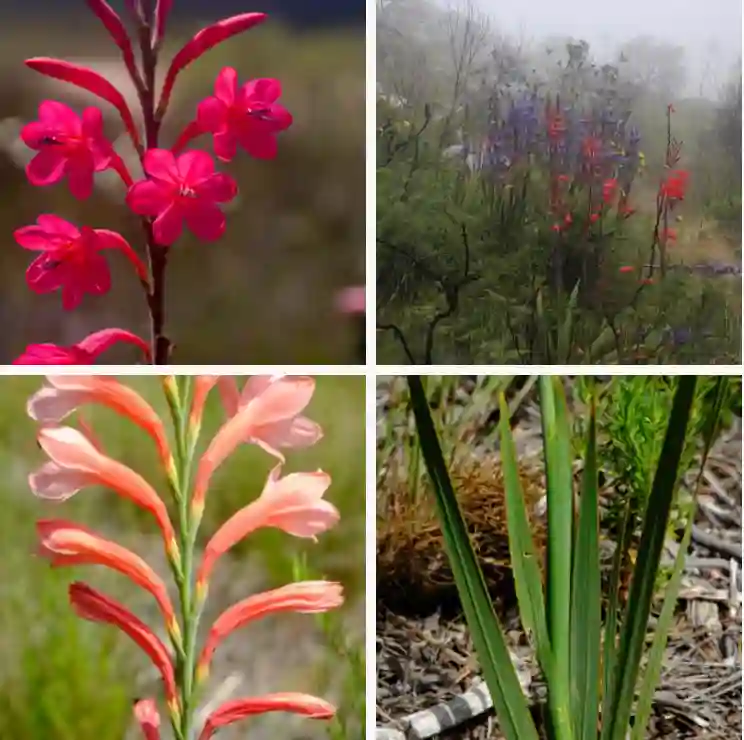Exploring the Fagaceae Family
The Fagaceae family is an incredible group of plants that never ceases to amaze me. From towering oaks to majestic chestnut trees, this family includes some of the most ecologically significant and diverse trees on Earth. In my personal experience, I’ve had the opportunity to observe several of these genera in various environments, each showcasing unique traits. In this article, I’ll explore eight key genera within the Fagaceae family: Castanea, Castanopsis, Chrysolepis, Fagus, Lithocarpus, Notholithocarpus, Quercus, and Trigonobalanus.
Castanea: The True Chestnuts
When I think of Castanea, the first thing that comes to mind is the chestnut tree’s iconic nuts. Whether roasted or ground into flour, chestnuts have been a staple food source for humans for centuries. Castanea trees thrive in temperate regions and can reach impressive heights. Their leaves are large and serrated, and their spiny burrs encase the edible nuts. In my experience, these trees tend to attract wildlife like squirrels and birds, making them a vital component of their ecosystems. The species Castanea dentata, known as the American Chestnut, holds a particularly tragic place in history, having been nearly wiped out by a fungal blight in the early 20th century. However, conservation efforts are underway to revive this once-dominant species.
Castanopsis: Evergreen Relatives
Castanopsis trees, often called “false chestnuts,” are primarily found in Southeast Asia. These trees are evergreen, unlike their deciduous cousins in the Castanea genus. I’ve encountered these trees in botanical gardens and found their dense, leathery leaves to be a striking contrast to the softer, more delicate foliage of true chestnuts. They bear nuts as well, though they aren’t as widely known for human consumption. Castanopsis species prefer subtropical climates and can be found in mountainous forests, providing habitat for various animal species. What’s intriguing is their ability to thrive in harsher, less fertile soils, showcasing their adaptability.
Chrysolepis: Golden Chinquapin
The genus Chrysolepis, commonly known as chinquapins, includes only two species. I’ve seen these trees on hiking trails in the western United States, particularly in California. What sets Chrysolepis apart is the golden, scaly undersides of its leaves, which give the genus its name. The nuts are encased in burrs similar to those of chestnuts, though they are smaller. These trees are often found at higher elevations and tend to form dense thickets. Chrysolepis trees may not be as widely recognized as other Fagaceae members, but their resilience in fire-prone areas has always impressed me.
Fagus: The Beech Trees
One of my personal favorites within the Fagaceae family is the Fagus genus, or beech trees. Known for their smooth gray bark and elliptical leaves, these trees are a staple of European and North American forests. I find their nuts, known as beechmast, particularly interesting because they are small but highly nutritious, serving as an important food source for wildlife like deer and birds. Fagus trees are also known for their shade tolerance and their ability to dominate forest canopies over time. Their striking fall foliage is an added bonus that draws in photographers and nature enthusiasts alike.
Lithocarpus: The Stone Oaks
Lithocarpus, often referred to as “stone oaks,” is a genus primarily found in Southeast Asia and parts of North America. These trees are distinctive because their acorns are often enclosed in woody, stone-like cups, hence the name “stone oaks.” I’ve encountered these in forested areas and found them to be particularly hardy, growing in regions that experience heavy rainfall. The species Lithocarpus densiflorus, or tanoak, is native to the western United States and has been a crucial species for indigenous peoples, who used its acorns as a food source.
Notholithocarpus: The Tanoaks
Notholithocarpus is a relatively recent addition to the Fagaceae family. It was previously grouped under Lithocarpus but has since been recognized as its own genus. The tanoak, Notholithocarpus densiflorus, is native to the Pacific Northwest, and I’ve seen them in several old-growth forests during my travels. They produce acorns, similar to oaks, but are evergreen like many Lithocarpus species. Tanoaks play a significant role in their ecosystems, providing food for a variety of animals. However, they have been severely affected by sudden oak death, a pathogen that has devastated populations in some areas.
Quercus: The Mighty Oaks
No discussion of the Fagaceae family would be complete without mentioning Quercus, the oaks. Oaks are arguably the most well-known members of this family, with hundreds of species spread across the globe. I’ve encountered Quercus species everywhere—from towering white oaks in temperate forests to scrubby live oaks in coastal areas. Their acorns are a critical food source for wildlife, and their wood has been used for everything from building ships to crafting furniture. Oaks are also some of the longest-living trees, with some specimens surviving for over a thousand years. In my experience, they are incredibly versatile, growing in a variety of climates and soil types.
Trigonobalanus: The Lesser-Known Member
Trigonobalanus is one of the lesser-known genera in the Fagaceae family, consisting of only a few species found in Southeast Asia and South America. I haven’t personally seen these trees in the wild, but their unique triangular nuts and small stature make them an interesting subject of study. Unlike the massive oaks or beeches, Trigonobalanus species tend to be smaller and are often overshadowed by other members of the Fagaceae family in terms of ecological significance. However, they contribute to the diversity and complexity of the forests where they grow.
Conclusion: The Diversity of Fagaceae
The Fagaceae family is a remarkable group of trees and shrubs that play an essential role in ecosystems worldwide. From the towering oaks to the resilient chestnuts and beeches, each genus offers something unique. Whether it’s the adaptability of Castanopsis or the ecological importance of Quercus, the Fagaceae family is full of life and resilience. Observing these trees in their natural habitats has given me a deep appreciation for their role in maintaining biodiversity and providing resources for both humans and wildlife alike.
If i die, water my plants!



